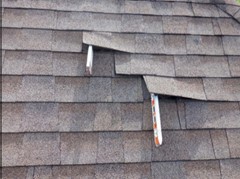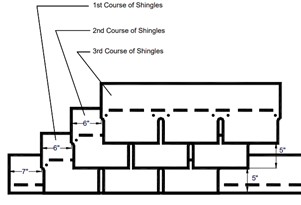
“The zippers”, the roofer exclaimed. “The wind came and caused the zippers.” As we climbed the ladder to inspect, the roofer representing the homeowner elaborated on the condition as non-bonded shingles on multiple overlying courses. He proceeded to illustrate by lifting numerous shingle corners.
The lower edges of shingles are adhered by a self-adhering sealant strip, which bonds soon after installation. Non-bonded shingles caused by failure of the sealant strip bond are frequently found on aging roofs and have been documented as thermal expansive failures in academic studies (Dixon, et. al, 2013. University of Florida). Thermal expansion is the tendency of matter to change its shape, area, volume, and density in response to a change in temperature. The question posed by the roofer advocating for the homeowner was – could the failure of multiple overlying shingle strips, or zippers, have been caused by wind?

The non-bonded shingles, or zippers, occurred along the edges of each 3-tab shingle. Some manufacturers’ product approvals specified installations which offset each overlying shingle by half the width of the underlying shingle. Consequently, as non-bonded shingles formed on the aging roof, the zipper effect was produced along the plane of installation. In conclusion, the zipper effect of non-bonded shingles in this case was actually caused by prolonged thermal expansion, which was predisposed to occur by the specified construction technique.
